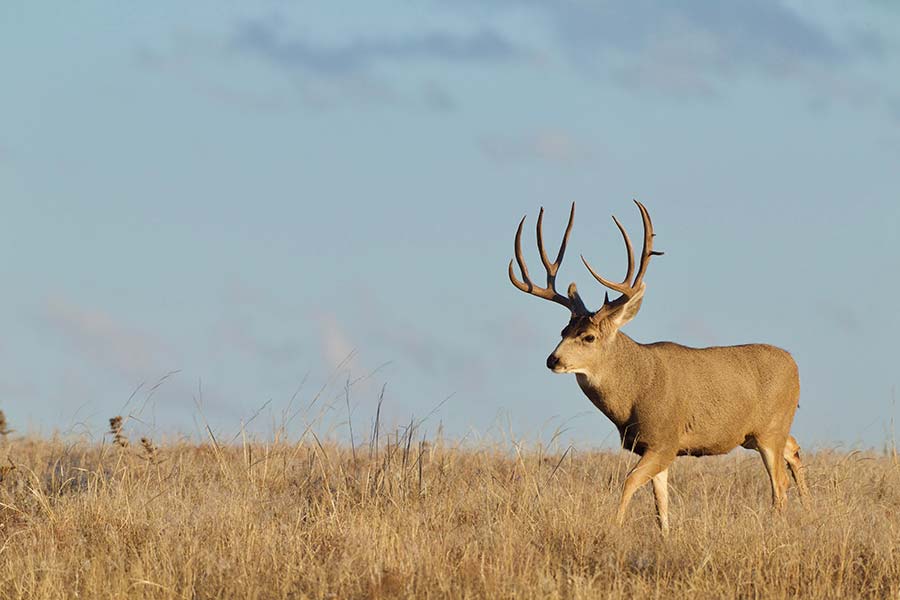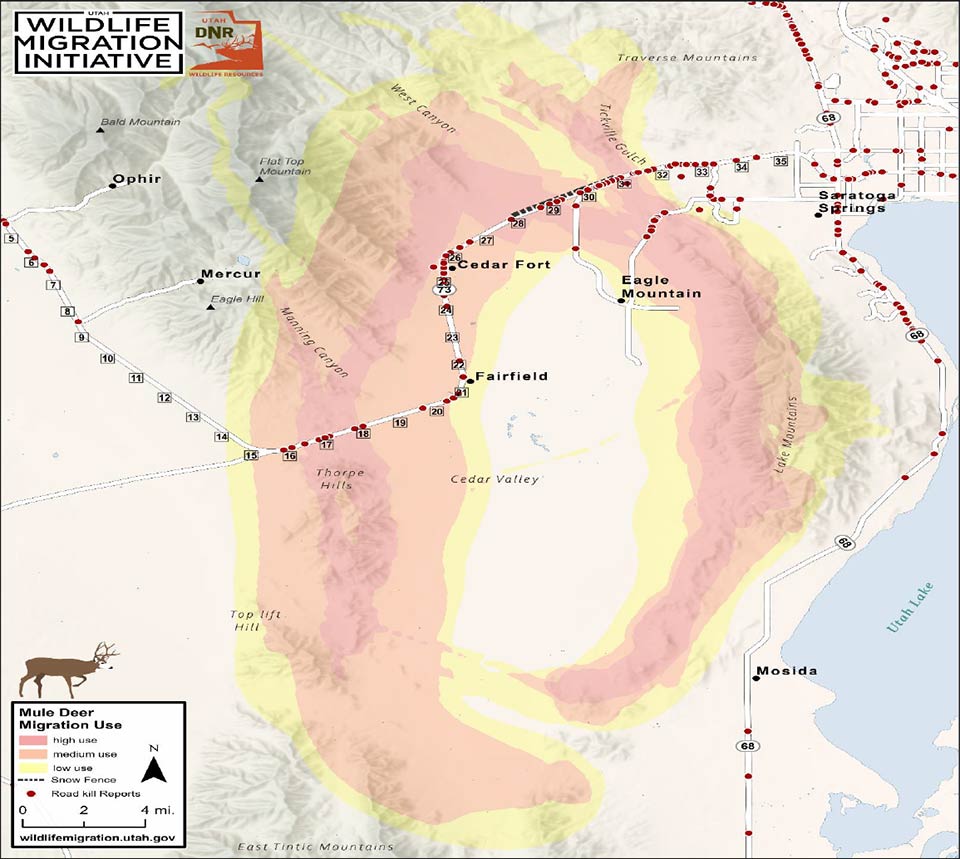Background
Utah is currently one of the fastest growing states in the country, and Eagle Mountain is one of the fastest growing cities in Utah.
 Population growth results in changes to the landscape as roads are built and expanded and developments constructed to accommodate growth. Rapid change can result in the deterioration and loss of wildlife habitat. It can also block wildlife movement and create higher mortality rates through accidents, such as vehicle collisions.
Population growth results in changes to the landscape as roads are built and expanded and developments constructed to accommodate growth. Rapid change can result in the deterioration and loss of wildlife habitat. It can also block wildlife movement and create higher mortality rates through accidents, such as vehicle collisions.
One of the primary ways that deer respond and adapt to change is through movement. Deer may migrate tens to hundreds of miles to take advantage of seasonal resources that increase their survival and reproduction.
Migration corridors are discrete areas used by the same individuals and populations year after year. Preserving movement corridors maintains healthy wildlife populations in the face of change.
A mule deer migration corridor runs right through the currently undeveloped western portion of Eagle Mountain. With careful planning, it is possible to preserve the migration corridor as Eagle Mountain City grows.
What We Know
- 46 mule deer have been fitted with a GPS tracking collar since 2018
- 330,000 animal movement locations have been recorded so far
- Approximately 2,000 mule deer migrate annually through the Eagle Mountain area
- Spring migration generally occurs between March 15 and April 30
- Fall migration generally occurs between December 1 and January 15
- Knowledge of migration routes are passed from mother to offspring
- More than 190 deer-vehicle collisions occurred in the area within the past two years (possibly twice that number)
- Deer-vehicle collision mile marker hotspots
- Eagle Mountain (MM 30-33)
- Cedar Fort (MM 24-26)
- Five Mile Pass (MM 16-18)
Areas of Concern
- Traffic volumes on SR-73 west of MM 31 have increased 60% in just 10 years
- UDOT plans on converting SR-73 to a freeway with frontage roads
- The population of Eagle Mountain is expected to grow to 150,000 by 2060
- Development (housing, business, roads, solar farms) can alter or block mule deer migration corridors
What’s Being Done
- Animal detection and warning sign
- Installations on SR-73 between MM 30 and 31
- Wildlife fencing on SR-73
- BLM fencing at Five Mile Pass
- Habitat improvements along and around the known corridor route
- Eagle Mountain City will include the migration corridor in its Parks and Open Space Master Plan to align green spaces with the migration corridor
Partners Involved
- Eagle Mountain City
- Bureau of Land Management
- UDOT
- Utah DWR
- Mule Deer Foundation
- Sportsmen for Fish and Wildlife
- Eagle Mountain Nature and Wildlife Alliance
